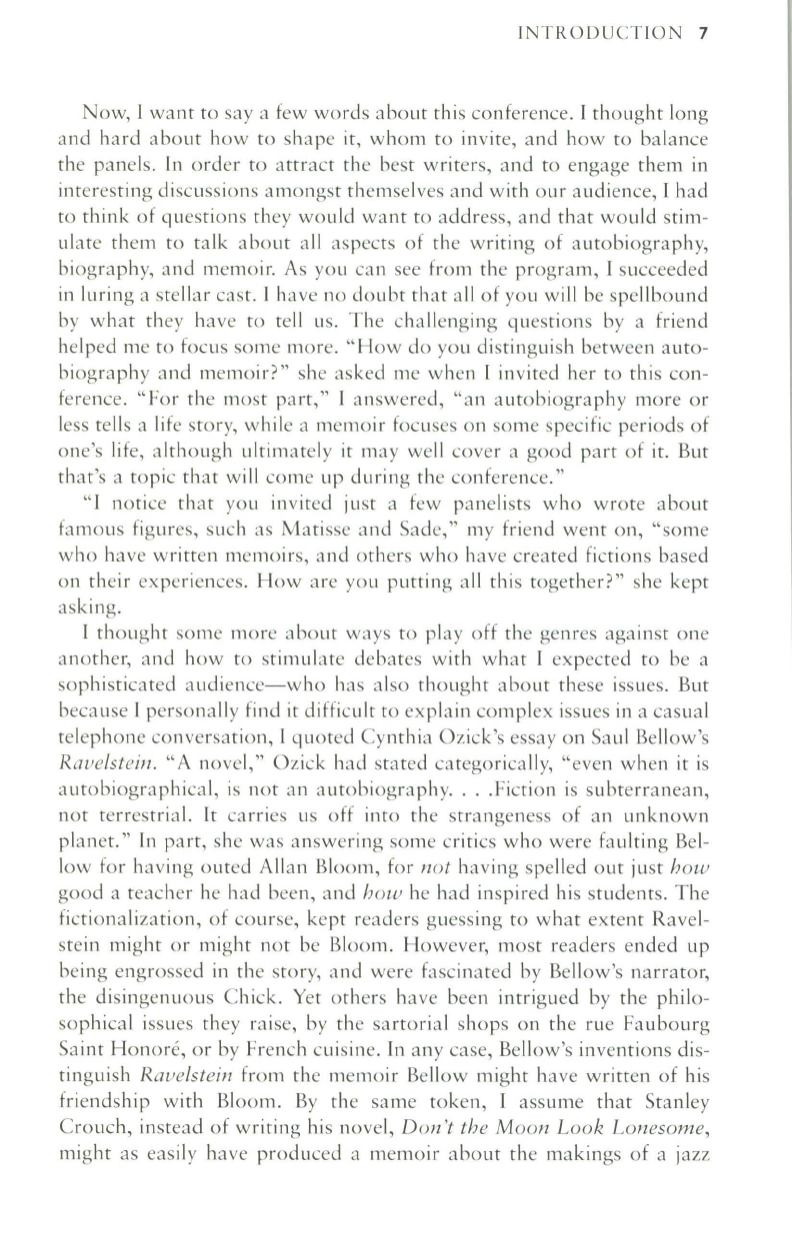
INTRODUCTION 7
Now, 1 want to say a few words about this conference. I thought long
and hard about how to shape it, whom to invite, and how to balance
the panels. In order to attract the best writers, and to engage them in
interesting discussions amongst themselves and with our audience, I had
to think of questions they would want to address, and that would stim–
ulate them to talk about all aspects of the writing of autobiography,
biography, and memoir. As you can see from the program, I succeeded
in luring a stellar cast. I have no doubt that all of you will be spellbound
by what they have to tell us. The challenging questions by a friend
helped me to focus some more. "How do you distinguish between auto–
biography and memoir?" she asked me when I invited her to this con–
ference. "For the most part," I answered, "an autobiography more or
less tells a life story, while a memoir focuses on some specific periods of
one's life, although ultimately it may well cover a good part of it. But
that's a topic that will come up during the conference."
"1 notice that you invited just a few panelists who wrote about
famous figures, such as Matisse and Sade," my friend went on, "some
who have written memoirs, and others who have created fictions based
on their experiences. How are you putting all this together?" she kept
asking.
I thought some more about ways to playoff the genres against one
another, and how to stimulate debates with what I expected to be a
sophisticated audience-who has also thought about these issues. But
because 1 personally find it difficult to explain complex issues in a casual
telephone conversation, I quoted Cynthia Ozick's essay on Saul Bellow's
Rave/stein.
"A novel," Ozick had stated categorically, "even when it is
autobiographical, is not an autobiography....Fiction is subterranean,
not terrestrial.
It
carries us off into the strangeness of an unknown
planet." In part, she was answering some critics who were faulting Bel–
low for having outed Allan Bloom, for
not
having spelled out just
how
good a teacher he had been, and
how
he had inspired his students. The
fictionalization, of course, kept readers guessing to what extent Ravel–
stein might or might not be Bloom. However, most readers ended up
being engrossed in the story, and were fascinated by Bellow's narrator,
the disingenuous Chick. Yet others have been intrigued by the philo–
sophical issues they raise, by the sartorial shops on the rue Faubourg
Saint Honore, or by French cuisine. In any case, Bellow's inventions dis–
tinguish
Rave/stein
from the memoir Bellow might have written of his
friendship with Bloom. By the same token, 1 assume that Stanley
Crouch, instead of writing his novel,
Don't the Moon Look Lonesome,
might as easily have produced a memoir about the makings of a jazz


